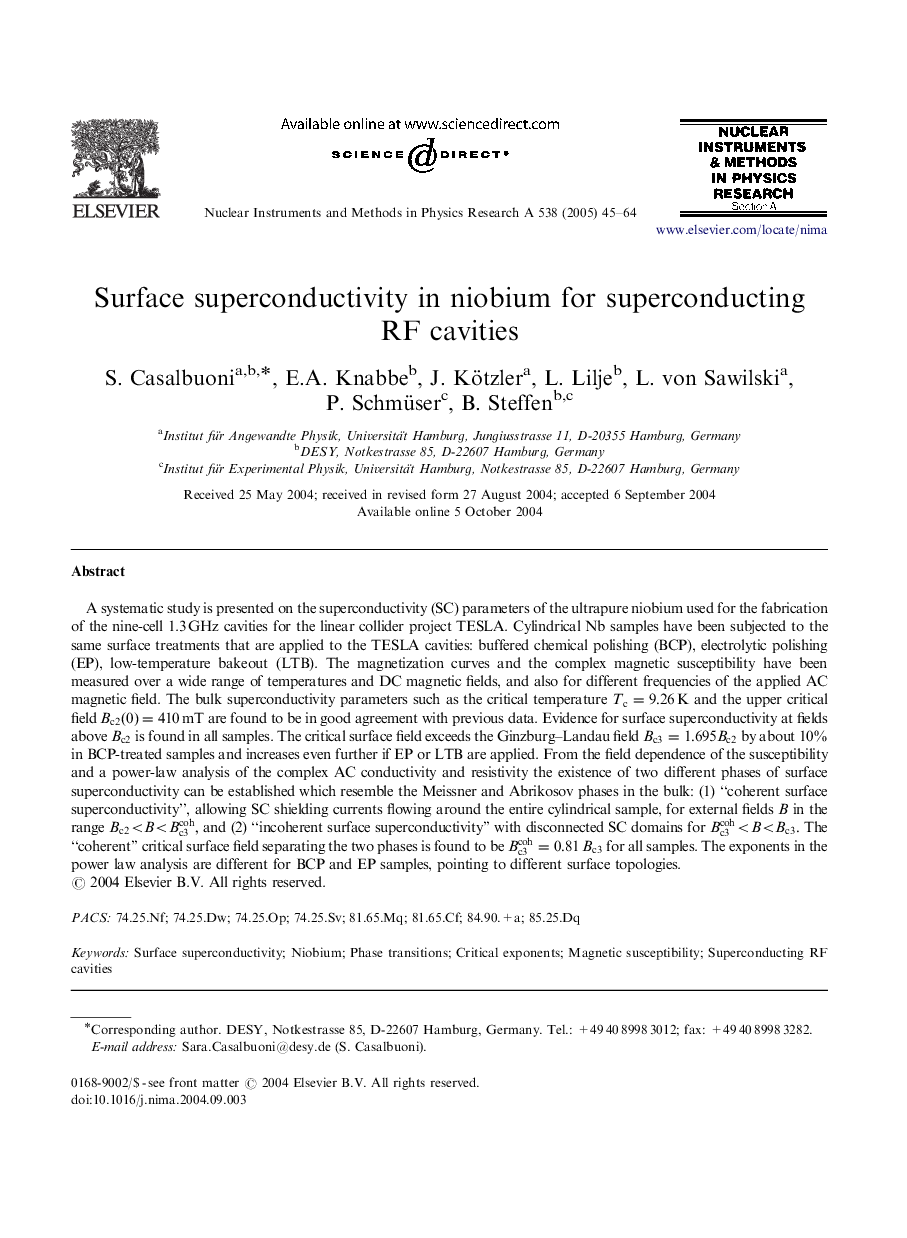| Article ID | Journal | Published Year | Pages | File Type |
|---|---|---|---|---|
| 9845765 | Nuclear Instruments and Methods in Physics Research Section A: Accelerators, Spectrometers, Detectors and Associated Equipment | 2005 | 20 Pages |
Abstract
A systematic study is presented on the superconductivity (SC) parameters of the ultrapure niobium used for the fabrication of the nine-cell 1.3Â GHz cavities for the linear collider project TESLA. Cylindrical Nb samples have been subjected to the same surface treatments that are applied to the TESLA cavities: buffered chemical polishing (BCP), electrolytic polishing (EP), low-temperature bakeout (LTB). The magnetization curves and the complex magnetic susceptibility have been measured over a wide range of temperatures and DC magnetic fields, and also for different frequencies of the applied AC magnetic field. The bulk superconductivity parameters such as the critical temperature Tc=9.26Â K and the upper critical field Bc2(0)=410Â mT are found to be in good agreement with previous data. Evidence for surface superconductivity at fields above Bc2 is found in all samples. The critical surface field exceeds the Ginzburg-Landau field Bc3=1.695Bc2 by about 10% in BCP-treated samples and increases even further if EP or LTB are applied. From the field dependence of the susceptibility and a power-law analysis of the complex AC conductivity and resistivity the existence of two different phases of surface superconductivity can be established which resemble the Meissner and Abrikosov phases in the bulk: (1) “coherent surface superconductivity”, allowing SC shielding currents flowing around the entire cylindrical sample, for external fields B in the range Bc2
Keywords
Related Topics
Physical Sciences and Engineering
Physics and Astronomy
Instrumentation
Authors
S. Casalbuoni, E.A. Knabbe, J. Kötzler, L. Lilje, L. von Sawilski, P. Schmüser, B. Steffen,
